
Eid-ul-Fitr 2024 today in Sudia Arabia and Gulf Region


Eid al-Fitr, often simply referred to as Eid, is one of the most important festivals in Islam. It marks the end of Ramadan, the holy month of fasting, and is a day of celebration and thanksgiving for Muslims worldwide. Here’s an overview of Eid al-Fitr:
- Date: Eid al-Fitr is celebrated on the first day of Shawwal, the month that follows Ramadan, according to the Islamic lunar calendar. The exact date varies each year depending on the sighting of the moon.
- Fasting: Ramadan is a month of fasting, prayer, reflection, and community. Muslims fast from dawn to sunset, refraining from food, drink, and other physical needs. Eid al-Fitr is a reward for completing this month of fasting and devotion to God.
- Prayers: On the morning of Eid al-Fitr, Muslims gather in large numbers at mosques or in open fields to perform special prayers known as Salat al-Eid. These prayers are followed by a sermon, during which the imam (prayer leader) addresses the congregation with messages of gratitude, forgiveness, and unity.
- Charity: Giving charity, known as Zakat al-Fitr or Sadaqah al-Fitr, is obligatory for Muslims before the Eid prayers. This charity is meant to ensure that everyone can participate in the festivities and enjoy a special meal on the day of Eid.
- Celebrations: After the prayers, families and friends come together to celebrate Eid. They exchange greetings of “Eid Mubarak” (Blessed Eid) and engage in various festivities. These may include feasting on special foods, wearing new or traditional clothes, giving and receiving gifts (including Eidi – money given to children), visiting relatives and friends, and participating in community events.
- Cultural Variations: While the core elements of Eid al-Fitr remain the same across the Muslim world, there may be cultural variations in the way it is celebrated. Different regions have their own customs, traditional dishes, and rituals associated with Eid.

Eid celebrations in Gulf countries, such as Saudi Arabia, Kuwait, Qatar, Bahrain, Oman, and the United Arab Emirates, are vibrant and joyous occasions that bring together families, friends, and communities. The way Eid is celebrated in the Gulf region shares similarities with other parts of the Muslim world, but there are also unique customs and traditions specific to these countries. Here’s an overview of how Eid is celebrated in the Gulf:
- Preparation: In the days leading up to Eid, households are busy with preparations. This includes cleaning and decorating homes, shopping for new clothes and gifts, and stocking up on ingredients for special Eid dishes.
- New Clothes: Wearing new clothes on Eid is a tradition in many Gulf countries. Families often buy new outfits, especially for children, to wear on the day of Eid. It’s a way to mark the occasion with joy and festivity.
- Prayers: The day of Eid starts with special congregational prayers known as Salat al-Eid. Muslims gather in mosques, prayer grounds, or designated open areas to perform these prayers, which are followed by a sermon delivered by the imam.
- Greetings: After the prayers, people exchange greetings of “Eid Mubarak” (Blessed Eid) with each other. This is a time for expressing good wishes, spreading joy, and strengthening bonds with family, friends, and neighbors.
- Family Gatherings: Eid is a time for families to come together and celebrate. After the prayers, families gather for festive meals, which often include traditional dishes and sweets. It’s a time for sharing stories, laughter, and love with loved ones.
- Gift Giving: Giving and receiving gifts, known as Eidi, is a common practice during Eid in the Gulf. Adults give money or gifts to children, and sometimes among family members and friends as well. It’s a gesture of generosity and love that adds to the joy of the occasion.
- Charity: Giving to those in need is an important aspect of Eid in the Gulf. Many people donate to charity organizations or distribute food and gifts to the less fortunate, ensuring that everyone can partake in the festivities.
- Community Events: In addition to family gatherings, many communities organize special events and activities to celebrate Eid. These may include cultural performances, fireworks displays, and charity drives, providing opportunities for people to come together and celebrate as a community.

Eid al-Fitr and Eid al-Adha, the two main Eid celebrations in Islam, are observed by Muslims worldwide, albeit with regional variations in customs and traditions. Here’s how Eid is typically celebrated in different parts of the world:
- Middle East: In countries like Saudi Arabia, the United Arab Emirates, Qatar, Kuwait, and others, Eid celebrations are marked by special prayers, family gatherings, feasting on traditional foods, and giving of gifts. Homes are decorated, and streets are illuminated with lights. Fireworks displays and cultural events may also take place.
- South Asia: Countries like Pakistan, India, Bangladesh, and others celebrate Eid with great enthusiasm. Mosques are filled with worshippers for special prayers, and families gather for festive meals. Traditional sweets like vermicelli (seviyan) are prepared, and gifts are exchanged among family members and friends. Charity is an integral part of Eid celebrations in South Asia, with many people giving to the less fortunate.
- Southeast Asia: In countries such as Indonesia, Malaysia, and Singapore, Eid is known as Hari Raya Aidilfitri or Hari Raya Puasa. It is celebrated with prayers, family gatherings, and feasting on traditional dishes. Muslims visit the graves of their loved ones and seek forgiveness from elders. In some regions, there are cultural performances and street processions.
- Africa: Eid celebrations in African countries like Egypt, Nigeria, Sudan, and others are characterized by prayers, community meals, and acts of charity. Traditional dishes vary by region but often include meat-based dishes. In some areas, there are colorful parades and cultural events.
- Europe and North America: Muslim communities in Western countries celebrate Eid with prayers at mosques, followed by gatherings with family and friends. Traditional foods from their respective cultural backgrounds are prepared, and gifts are exchanged. Many cities also host Eid festivals and events open to the public.
- Other Regions: Eid is celebrated in various other parts of the world with their own unique customs and traditions. From Central Asia to the Pacific Islands, Muslims come together to observe Eid with prayer, feasting, and community spirit.
In summary, Eid is a universal celebration that brings Muslims together across the globe, regardless of geographical boundaries, to commemorate the values of faith, family, and community.






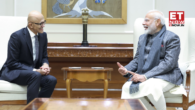
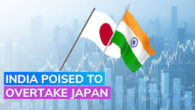

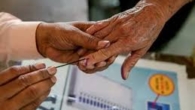
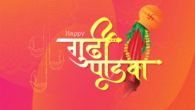
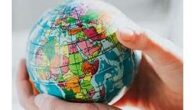
Leave a Reply